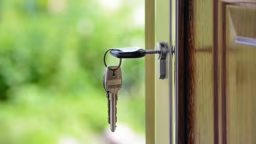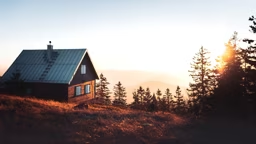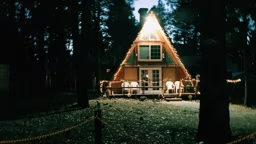
It was the first downer on what had been a steady string of cabin high notes. I was in high school, and we had recently finished building a modest hunting cabin on the banks of the St. Louis River in northern Minnesota. It is a uniquely beautiful and remote area, and the entire family had pitched in to make this our second home.
But after a couple weeks of absence, we returned to find the front door of our cabin ajar and the interior ransacked. The lowlifes stole cookware, fishing rods (including my nephew’s Snoopy pole), the 10-point rack of my first white-tailed buck, and even extra rolls of toilet paper.
The break-in left a sour taste in our mouths, and also served as a valuable lesson: Cabins, especially in remote locations, can be particularly vulnerable to burglary and vandalism. But thieves are inherently lazy. If you make your cabin difficult for the thieves to access, they will probably move on to some other unfortunate residence. Here are some ways to minimize your security risk:
1. Trim those shrubs. Clear away any brush that might afford a thief hiding areas.
2. Install motion-activated lights on the front and back of your cabin. Breaking into a cabin under the bright glare of security lights can be done, but it will force the thief to be outside their comfort zone. If they can’t get inside fast, working under lights will encourage them to move on.
3. Dead bolts are essential. Unfortunately, a conventional door lock is often so easy to jimmy that many times an experienced thief can get inside your cabin faster with a flat bar than you can with the key. Install a dead bolt and that entry time multiplies, increasing the risk of the thief being spotted. They’re inexpensive, effective, and easy to install.
4. Protect vulnerable windows. Installing wire mesh over windows that are hidden from view takes away a favorite access point for thieves.
5. Talk to your neighbors and local law enforcement. There is no better deterrent to a thief than the presence of a non-thief. My parents’ river cabin is safer nowadays because a local conservation officer includes it on his regular patrol rounds. And my wife and I now own a lake cabin where we are blessed with neighbors who keep a close eye on our place when we’re away. Enlisting the help of your neighbors, and offering to do a check for other seasonal dwellers, is a great way to build an anti-theft network … and friendships.
6. Make it look like someone’s home. There are many ways to make your place look lived in, but here are a few of the most interesting:
-
Place a pair of old, large men’s boots next to the front door.
-
Keep a supply of old yard tools on hand. At the end of a cabin stay, prop a rake against a tree or leave a wheelbarrel next to the garden.
-
Buy and install a device that simulates the flickering light of a TV. To see one of these devices, go to www.faketv.com.
7. Install a security system. Remote systems have come a long way in the past decade. Many of today’s systems use encrypted cellular signals to report not only unauthorized entry, but also monitor and report fire, freezing and other environmental issues. This means systems on the most remote cabins can quickly notify you and summon emergency response, regardless of the presence of landlines. Many systems also offer apps for your smartphone, allowing real-time monitoring of your cabin. But before you purchase, make sure the security system interfaces with local law enforcement, and check for any hidden fees.
CHOOSING A GOOD DEAD BOLT
Not all dead bolts are created equal. According to State Farm Insurance: “All dead bolt locks should be made of solid steel, bronze or brass; die-cast materials are not fashioned for great impact and could break apart. Select a dead bolt that has been given a Grade 1 from the American National Standards Institute (ANSI). The ANSI tests locks for security and durability, and gives them a Grade 1, 2 or 3 with Grade 1 being the best.”










